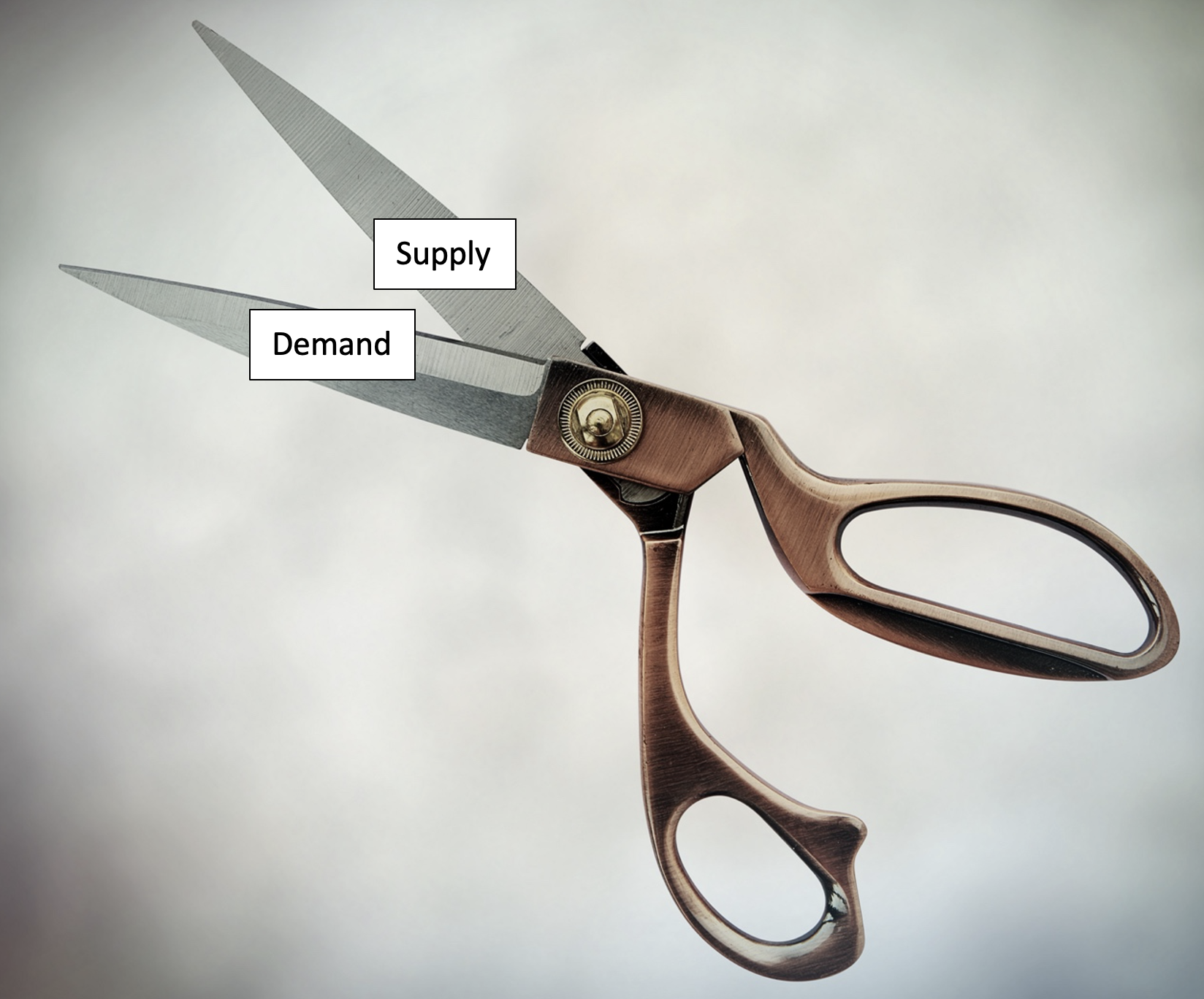Our economies are complex, but by making some simple assumptions, we can focus on what is most relevant in explaining something. For this reason, economists use models to give us logical and precise reasoning behind many questions that come to our minds. Sorry, if you thought of this model as the one who walks on the ramp or does an ad on TV. Unfortunately, here we are talking about a little bit boring, economic models. Unlike attractive human models, these models generally consist of a set of mathematical equations, which are a simplified depiction of the real world. So, even if they are not pretty looking, they serve a very important role in economics. They try to precisely (like theories in science) describe how and why, we, as economic agents, act and are likely to act in future.
One of the most important models in economics is the demand and supply model, together they explain how the price of anything gets determined.
Economists use models for a variety of reasons, some of these include:
- To assist in academic research that supports a proposed economic theory
- To make economic forecasts so that we can understand the conclusions based on the assumptions made
- To influence policy making relating to larger economic activities or at macro level
- To explain and influence company strategies for businesses
- To explain the growth pattern among countries
- To understand banking, investment and saving behavior
- To explain decision making at household level
And many more…
Even though, no economic model is a perfect description of reality, the process of making, testing, and revising these models forces economists and policymakers to think logically when trying to propose something. With the help of these mathematical models, they try to accurately depict how the economy works, and what drives economic behavior in people at large. This in turn helps them answer what they should or should not do when proposing a particular policy.
These economic models use a lot of mathematics, as one of the key contribution of economics to mankind is how to think on the margin. That means calculating the additional benefit, and the additional cost of any particular action. Knowledge of calculus comes in handy in finding these solutions. So, if you or someone you know are planning to study economics in college, make sure they are good at calculus and algebra.
Economists also use a lot of graphs, as these are a good visual representation of these economic models. The charts and graphs are relatively easier for people to understand as compared to mathematical models. So for my blogs, I will stick to graphs only. 🙂

